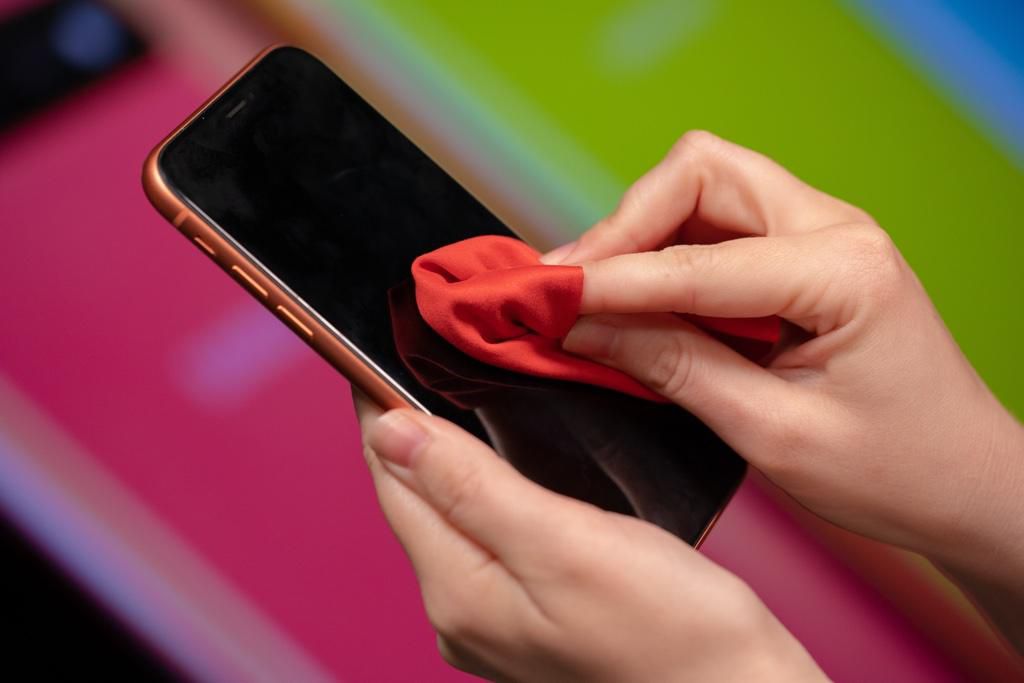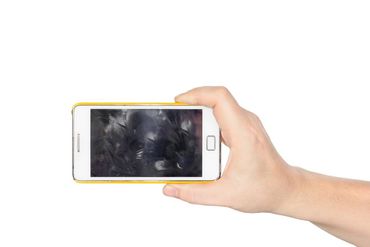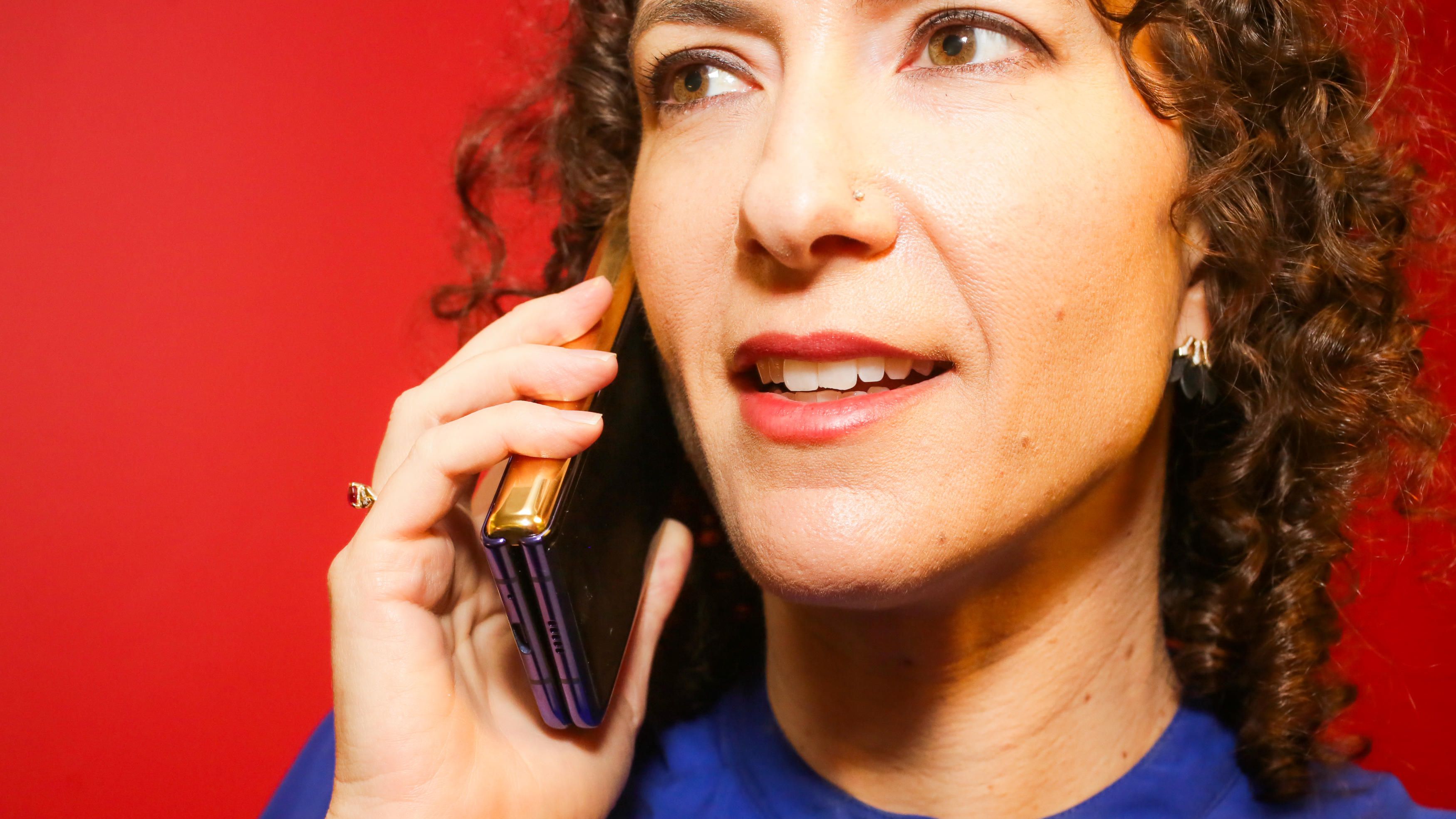Help keep coronavirus off your phone: How to disinfect your device without damaging it
You use your phone for several hours a day, including when you're checking your shopping list at the store. And studies have found the novel coronavirus may be able to survive on some surfaces for up to and maybe even longer than nine days -- and that includes your beloved phone. This is the device you handle constantly and often press to the side of your face, which means that any bacteria, virus or other germ that makes its way onto your phone or case could easily transfer to your skin.

Washing your hands the right way can help keep you and your loved ones from transmitting the virus, but what about cleaning your phone? The good news is that disinfecting your electronic device has officially become easier. Apple says on its website that you can safely clean your iPhone with disinfectant wipes, like Clorox sheets. Samsung added to its website you can use an alcohol-based solution (70%) and apply it to your phone with a microfiber cloth.
However, there are still cleaning agents and techniques to avoid. While you might initially see good results, these harsher methods can eventually damage the screen (or possibly the internal components) that you're working so hard to protect.
We're going to tell you what products to avoid and the best ways to disinfect your phone and clean off fingerprint smudges, sand and lint from the ports and tenacious makeup off the screen (hint: never with makeup remover). We also tell you how to care for phones rated for water-resistance.

Disinfect your phone: Wipes, not pure alcohol
If you touch your phone after touching a public door handle or grocery cart, you may immediately think to clean it with rubbing alcohol. Don't. Straight alcohol can strip the oleophobic and hydrophobic coatings that keep oil and water from damaging your display and other ports.
Some websites suggest creating a mix of alcohol and water yourself, but it's crucial to get the concentration right. Get it wrong and you could damage your phone. The safest bet is to use disinfectant wipes that contain 70% isopropyl alcohol to clean your phone screen.
Read more: 6 essential cold and flu products you need whether you're sick or not
In the past, we were instructed to not use disinfectant wipes on our phone screens, but now Apple says it's OK to use Clorox Wipes and others with similar concentrations.
AT&T's recently revised cleaning guidelines suggest that you "spray a nonabrasive or alcohol-based (70% isopropyl) disinfectant directly on a soft lint-free cloth and wipe down your device while it is powered down and unplugged." An earlier version of the company's post suggested using paper towels, which are far too abrasive (see below). After we reached out, AT&T has since changed its post to reflect the soft cloth. Samsung has also recently said you can create an alcohol-based solution of 70% ethanol or isopropyl alcohol, applied with a microfiber cloth.
Another option for day-to-day cleaning is investing in a UV light, such as PhoneSoap. This UV light company claims to kill 99.99% of germs and banishes bacteria. As far as we know, it hasn't been tested in relation to this strain of coronavirus.
How to clean fingerprint smudges from your screen
Fingerprint smudges are hard to prevent because your skin constantly produces oils. That means that every time you pick up your phone, it's bound to get fingerprints all over it.
The safest and most effective way to clean your screen is with a microfiber cloth. If the screen is in desperate need of cleaning, use distilled water to dampen the microfiber cloth and then wipe down your screen -- avoid squirting the water directly on the screen. This method can be used on the back and sides of your phone, too.
You can also try a microfiber screen cleaner sticker, which you stick to the back of your phone and can pop off when you need to give it a wipe-down.

Remove sand and lint with this trick
Lint and sand can get stuck in the small ports of your phone and in the crevices where the screen meets the body.
The best solution for removing sand and lint is Scotch tape. You can lay it along the creases and speaker, and roll it up and gently place it in the ports. The tape's stickiness will pull out any lint or sand that may be stuck in your phone.
For the smaller speaker holes that tape can't reach, use a toothpick or try to vacuum the debris out with a small crevice tool. These tools can also be used for other small appliances or hard-to-reach areas in your car.

Remove makeup safely
When you have a full face of makeup and need to make a call, guess what that foundation is about to stick to? That's right, your phone screen. And while you may use makeup remover to take off your makeup every night, you shouldn't use it as a screen cleaner due to some chemicals that could be lurking in the ingredients. Organics.org explains the chemicals that could be in your makeup remover.
Instead, you could get your phone its own makeup remover, such as Whoosh. The company claims it's safe for all screens and contains no alcohol, chlorine, ammonia or phosphates that could damage the various screen coatings.
You can also use a damp microfiber cloth to clean it -- and then throw that cloth in the wash. Make sure you use a spray bottle to spritz the cloth, rather than running it under water. The less water, the better.
Can you wash waterproof phones?
If you have a water-resistant phone, rated for IP67 and above, you can rinse it with water. Although these phones, like the iPhone 7 ($550 at Boost Mobile) and newer and the Galaxy S phones, can withstand submersion for up to 30 minutes in up to three feet of water, it's a much better idea to use a damp or wet cloth to clean your phone. Then dry your phone with a dry, soft cloth to remove the water. Make sure to pat dry all speakers and ports.
Dunking the phone in water or running it under a faucet will get water into the ports, which means you won't be able to charge it until they're dry, and that can take time. Remember that having a water-resistant phone is more about peace of mind than it is about purposely taking your phone for a swim.
Now that your phone is clean, check out how to avoid coronavirus with these nine tips to limit your risk without cutting yourself off from the world and follow these handwashing tips to learn the best way to clean your hands to protect against the virus.
8 things you should never use to clean your phone
We're not here to shame you, but drop that bottle of Windex, stat. This is how not to clean your screen.
Window cleaner
You clean your mirrors and windows with window cleaner, and they're squeaky clean, so it must be OK to use on your phone? Wrong! Some newer phones, such as the iPhone XR ($599 at Apple), have a protective coating that resists water and oil, which can wear out over time.
Using harsh cleaners can strip the coating and could leave your phone more vulnerable to scratches. James LeBeau, an associate professor of materials science and engineering at MIT, told us that any cleanser with an abrasive agent will likely scratch the surface, so those should be avoided entirely.
Kitchen cleaners
A screen's scratch-resistant properties won't get ground down by cleaning agents, but stripping that protective coating is still a problem. That's why Apple also suggests not using household cleaning products to clean your iPhone, including bleach. Bar Keepers Friend, for example, states that its abrasive formula may harm the protective layer. Bon Ami states not to use on glass with coatings.
Paper towels
They may be the go-to for cleaning your desk, but keep them away from your phone. The paper can shred, making the debris on your phone much worse. Paper towels can even end up leaving scratches on your screen.
Rubbing alcohol
Since many newer phones have a protective coating, rubbing alcohol can wear it away quicker over time, causing your phone to be more prone to scratches. Make sure to check for alcohol in product ingredients on any "safe to use" phone screen cleaners. Apple says to avoid alcohol when cleaning its devices.
Makeup remover
Some makeup removers may have chemicals that can be harsh to an electronic screen. LeBeau suggests avoiding makeup remover and instead use a soft cloth with a little bit of water.
Compressed air
Your phone is delicate, so blowing an intense amount of air into its portals can cause some damage, specifically to your mic. Tech companies, like Apple, specifically warn not to use compressed air.
Dish soap and hand soap
While your dish and hand soaps may be gentle, the only way to use them is to combine them with water. Most phone companies suggest to keep water away from your phone, so again, stick to a damp cloth.
Vinegar
This is a no-no. Vinegar will strip the screen's coating. You could, as Lifehacker suggests, use very diluted vinegar to cleanse other parts of your phone. Android Central suggests a 50/50 mix with distilled water for cleaning the sides and back.
You should read it
- Looking back at Amazon's 2017
- Apple again insisted on banning the sale of Samsung products
- Which smart speaker is perfect for you?
- What 5G phones are available now?
- Instructions for making a call using Amazon Echo
- 7 things are only available on Android phones
- The 13-inch MacBook Pro is the best-selling laptop on Amazon
- Samsung mocked Apple for the iPhone bend
May be interested
- UK developing coronavirus-tracking app to ease lockdown restrictions
 the opt-in app would use bluetooth to record when people come in contact with someone with the coronavirus and then let them know to self-isolate.
the opt-in app would use bluetooth to record when people come in contact with someone with the coronavirus and then let them know to self-isolate. - Coronavirus lockdowns: Can you go outside, to the gym, on a drive and other answers
 across the us and europe, the most severely stricken coronavirus areas can teach us what to expect.
across the us and europe, the most severely stricken coronavirus areas can teach us what to expect. - Coronavirus vaccines: The drugs in development to treat COVID-19
 researchers are racing to develop new treatments and therapies to tackle the coronavirus pandemic. here's what you need to know about them.
researchers are racing to develop new treatments and therapies to tackle the coronavirus pandemic. here's what you need to know about them. - Coronavirus stimulus check is official: Find out if you're eligible for up to $1,200
 the new coronavirus relief package includes cash payments to many people affected by the epidemic. here's what you need to know.
the new coronavirus relief package includes cash payments to many people affected by the epidemic. here's what you need to know. - Coronavirus $1,200 stimulus check: Find out if you're eligible
 the new coronavirus relief package includes cash payments to many people affected by the epidemic. here's what you need to know.
the new coronavirus relief package includes cash payments to many people affected by the epidemic. here's what you need to know. - Samsung donates its phones to quarantined coronavirus patients
 electronics giant says it's also helping retool factories that produce face masks.
electronics giant says it's also helping retool factories that produce face masks. - Coronavirus updates: States extend lockdowns as federal social distancing guidelines pushed to April 30
 plus: dr. anthony fauci, one of the us government's top advisers on coronavirus, says covid-19 could kill 100,000 to 200,000 americans.
plus: dr. anthony fauci, one of the us government's top advisers on coronavirus, says covid-19 could kill 100,000 to 200,000 americans. - Coronavirus vaccines: Drug trials, chloroquine and treatments for COVID-19
 coronavirus vaccine candidates are already being trialled in animals and humans. plus, the cutting-edge drugs being developed to counter the pandemic.
coronavirus vaccine candidates are already being trialled in animals and humans. plus, the cutting-edge drugs being developed to counter the pandemic. - Google searches about finances spike in US amid coronavirus pandemic
 the query 'coronavirus money help' has upticked over the last month.
the query 'coronavirus money help' has upticked over the last month. - Coronavirus: How to track the spread across the world as cases top 450,000
 an online dashboard shows all confirmed, suspected and recovered coronavirus patients, as well as deaths.
an online dashboard shows all confirmed, suspected and recovered coronavirus patients, as well as deaths.









 iOttie's fabric-wrapped power bank does Qi charging and USB-C for $35
iOttie's fabric-wrapped power bank does Qi charging and USB-C for $35 iPad trackpad support is just the start of iOS 13.4's great features
iPad trackpad support is just the start of iOS 13.4's great features Work from home: When the iPad Pro and Surface became the best working machines, more than smartphones and traditional PCs
Work from home: When the iPad Pro and Surface became the best working machines, more than smartphones and traditional PCs iPad Pro 2020 inherits both the unwanted 'feature' Apple of 2018
iPad Pro 2020 inherits both the unwanted 'feature' Apple of 2018 iPad Pro 2020 has a second 'abdominal' operation, revealing the differences between LiDAR and Face ID
iPad Pro 2020 has a second 'abdominal' operation, revealing the differences between LiDAR and Face ID Galaxy M11 revealed: Perforated screen, 3 rear cameras, Snapdragon 450, 5000mAh battery
Galaxy M11 revealed: Perforated screen, 3 rear cameras, Snapdragon 450, 5000mAh battery